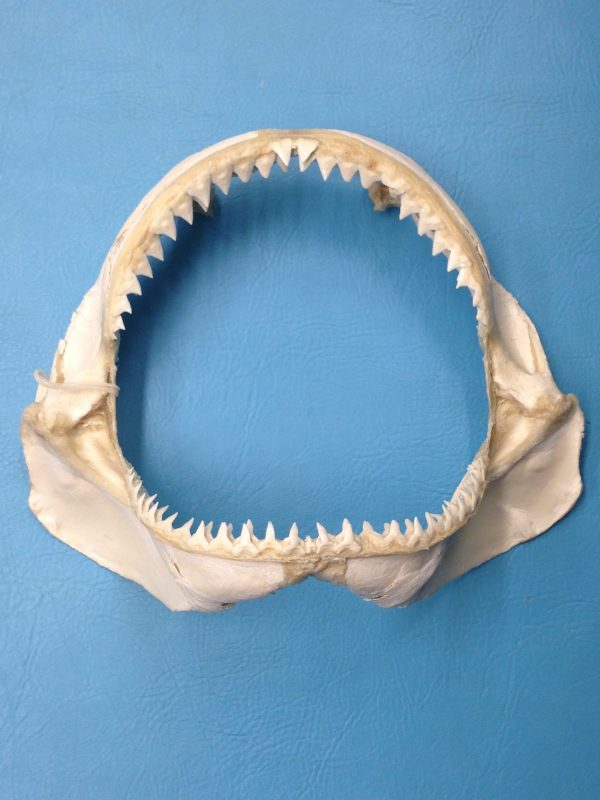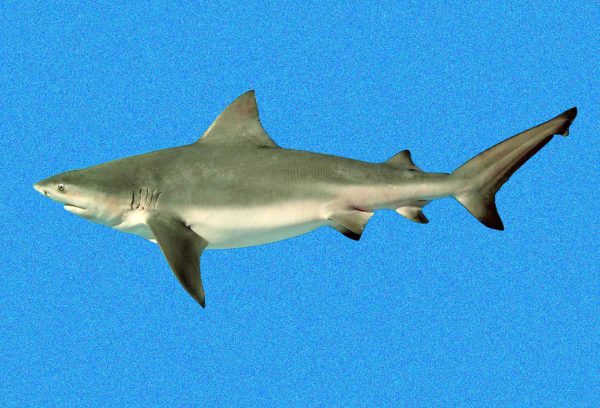Shark feeding habits are helping scientists identify marks on human bones found in the ocean.
By analyzing shark scavenging behavior, the University of Florida’s C.A. Pound Human Identification Laboratory identified which marks were left behind by sharks, the type of shark that made the marks and where the feedings might have occurred. Most research focuses on shark attacks themselves, and little is known about shark scavenging on human remains.

Florida Museum photo by George Burgess
“We don’t know a lot about what human remains look like when a shark gets a hold of it,” said Allysha Winburn, a forensic anthropologist at the lab. “So when I had this case that seemed to me to have shark scavenging signatures on it, it seemed to be a really good opportunity to discover exactly what shark scavenging looks like.”
Knowing how to identify shark tooth marks can be helpful for forensic anthropologists so they can discern them from other marks that might help with criminal investigations.
Winburn said what distinguishes the marks from those made by terrestrial carnivores such as coyotes or bears is that shark teeth leave striations — ridges, furrows or linear marks — while terrestrial carnivores leave marks that look more like punctures.
She worked with Michala Stock, a forensic anthropologist at the lab, and George Burgess, the director of the Florida Program for Shark Research and International Shark Attack File at the Florida Museum of Natural History, to examine six Florida cases that showed similar marks and determine whether they were left by sharks.
The remains were found off of Florida’s Atlantic and Gulf coasts. The group published its findings in a paper in the Journal of Forensic Sciences.
They found that shark scavenging on remains was more common than shark predation, although in one case, it could not be determined which activity left the marks. The group also found that sand-sediment and wave activity can create markings on the bones, making shark striations harder to distinguish.
Burgess said having only the bones to work with made gathering information more difficult.
“First of all, there’s no flesh, so you don’t have any bite marks,” he said. “Now all you have is whatever marks teeth might have made on the bone.”
He said he was able to determine the species and size of the shark by the marks. The species provided clues as to where the feeding might have occurred because some species of sharks only live in specific areas.
The marks, however, couldn’t indicate the cause of death because the lab only had a few bones from each individual, Burgess said.
“From a forensic standpoint, all these things are clues of what went on with that bone,” he said. “It very well allows the forensic community to understand when they see a bone that has this kind of a mark on it, it doesn’t necessarily mean it was done by a knife or a machete. In fact, there could be a natural cause to what they’re seeing.”

Florida Museum of Natural History photo by George Burgess
Winburn said they were able to identify signatures of certain sharks based on the marks they made on the bones.
“The really interesting thing to me was we had one skeletal element — a femur — where those etched bone gouges looked like they were spiraling down the surface, almost like a candy cane,” she said. “George said, ‘Oh yeah! That’s candy caning.’ He said it’s what certain species of sharks do, especially bull and tiger sharks. They will bite down onto the limb, which is typically attached to a deceased individual. It’s not usually the cause of death, but someone has drowned and they’re hanging in the water. The shark will bite off the limb and spiral down to shred the flesh from the bone.”
She said she hopes that identifying specific signatures will help other forensic anthropologists quickly and accurately identify marks they find.
“We hope that people who are living on other coastlines now kind of take up this cause and fire back at us, ‘Well, this what our shark signature looks like,’ ” Winburn said. “We want to start a dialogue on what kind of species you can expect in different regions and how you might be able to infer their behavior based on what the bones look like.”
Burgess said this research could potentially benefit Florida because there are more shark attacks in the state than anywhere else. He said this can be attributed to the fact that warm, tropical water is just as good a place for sharks as it is for humans.
“We’re constantly dealing with shark bites because they’re simply part of the equation, just like sunburn and stepping on a broken shell are,” he said. “While a shark attack is important, it’s not nearly as important as the fact that sharks are in decline around the world as a result of overfishing and habitat loss.”
Sources: Allysha Winburn, aip231@ufl.edu
George Burgess, gburgess@flmnh.ufl.edu, 352-273-1950
Learn more about the Florida Program for Shark Research at the Florida Museum.
Learn more about the C.A. Pound Human Identification Laboratory at the University of Florida.
Learn more about Ichthyology at the Florida Museum.